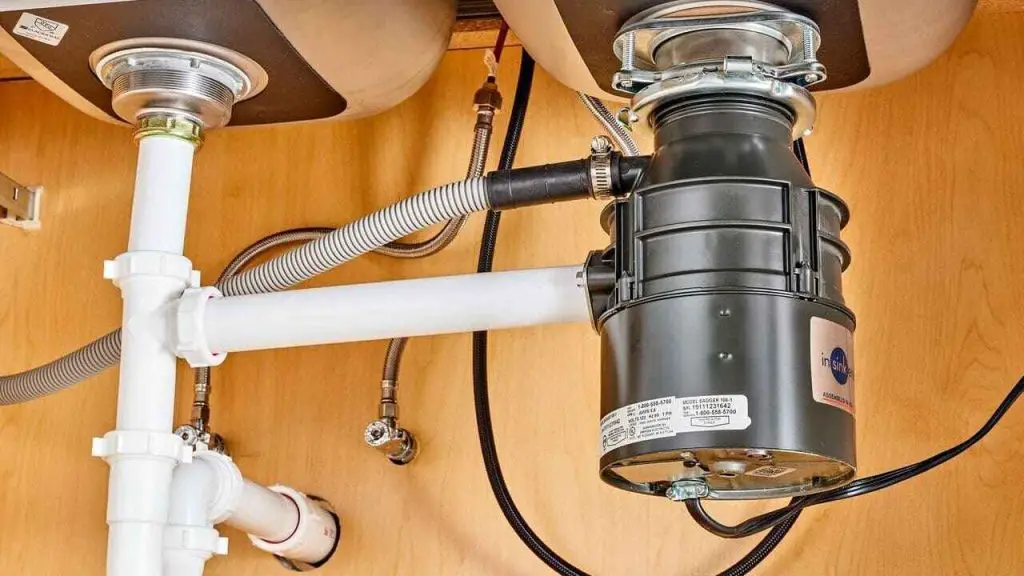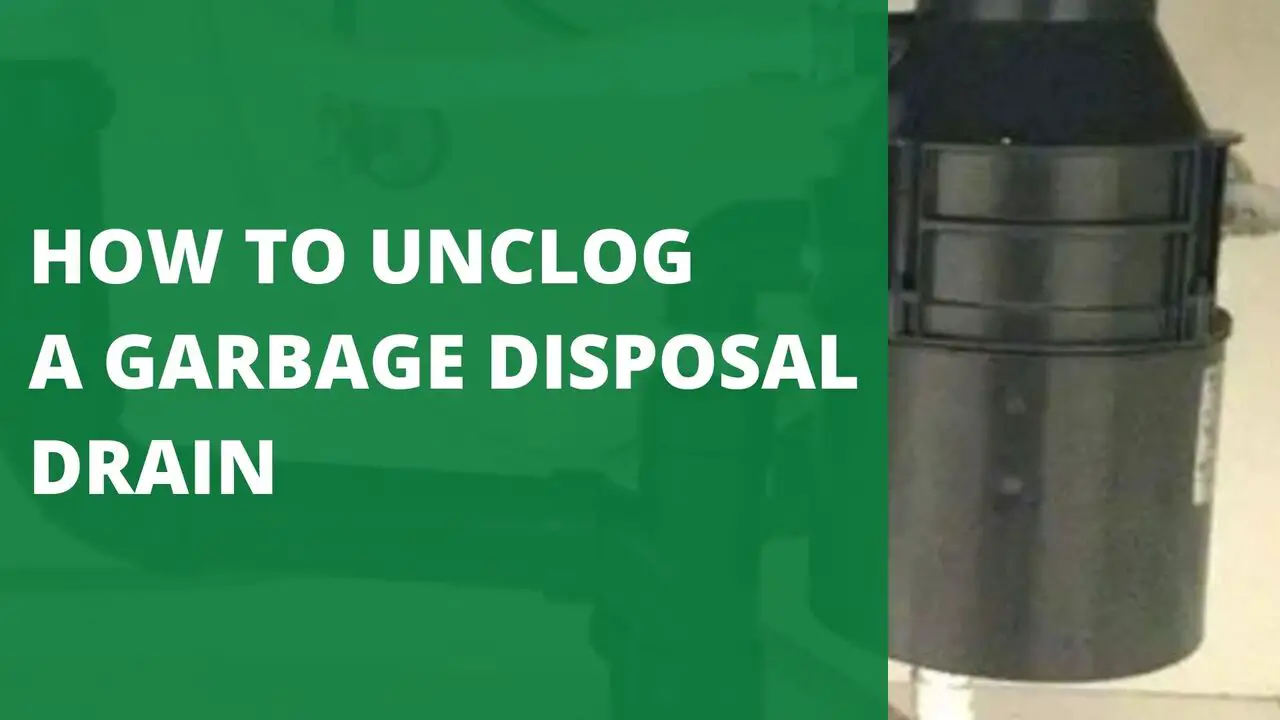It can be a real pain if your garbage disposal is not working. Not only is it smelly and inconvenient, but it can also be a safety hazard.
This blog post will show you how to unclog a garbage disposal drain. We will provide step-by-step instructions on clearing the clog and getting your disposal up and running again!
How to Unclog a Garbage Disposal Drain?

There are many ways to clean a garbage disposal drain, but some methods are more effective than others. For example, liquid drain cleaners can be dangerous because they can erode the plastic and rubber parts of the unit, such as the splash guard.
Before you try to clean your garbage disposal drain, always remember to turn it off. Water and electricity should never mix. Additionally, refrain from sticking your hand inside the unit for any reason; whether the power is on or not, this could result in a serious injury.
After using any of the methods below to clear a clog, wait until the garbage disposal cools down before turning it back on your risking overheating it. You can tell if a unit is cooled by touching it. If it doesn’t feel hot or warm, it’s cooled down enough to turn on again.
1. Manual Checkup
The first thing to try is to look at the inside of the disposal to determine what’s causing the blockage. To find out who or what is causing the clog:
- Shine a flashlight and pliers or tongs into it.
- Insert the pliers or tongs into the unit and pull out any object that has fallen off.
- Continue doing so until all of the debris or junk from your disposer is removed.
2. Baking Soda and Vinegar
Try using baking soda and vinegar as a DIY remedy. This fizzy foam combination can cut through food clogs and clean the unit. This solution is especially good for unclogging grease, fat, and oil and deodorizing smelly garbage disposal.
- Add baking soda to the garbage disposal.
- The next step is to pour vinegar down the garbage disposal.
- Let the fizz dissolve the clog for 20 minutes.
- Flush hot water down the pipe to remove the mixture and food waste.
3. Plungers
A plunger uses water pressure to remove tough clogs from your pipe drain. By plunging up and down forcefully, the clog will loosen and eventually move out of the way.
- Plunge the drain and cover it with the plunger.
- You should place drain stoppers over the other drain.
- Add enough water to the sink to create a seal around the rounded bottom of the plunger or flange.
- To remove the clog, plunge the plunger vigorously up and down.
- Keep repeating this motion for a few minutes.
- Remove any loose items with a flashlight.
- You should turn on the cold water faucet if no open items appear. There should be no problem draining the water.
4. Hex Wrench or Wooden Handle
If your garbage disposal has a hole in the center of the unit, you should use an L-shaped hexagonal device called a hex wrench. The hex wrench, also known as an Allen wrench, may or may not have come with the disposal.
The instructions for the disposal should elaborate on how to use it. You should insert the hexagonal end into the hexagonal hole outside the disposer. It should fit in perfectly and align correctly. Remove the drain cover and grasp each side of the blades using a flat, sturdy object like a ruler or box. Then loosen both sides with your fingers on one side and your palm on the other until they spin freely in both directions.
If your garbage disposal doesn’t have a hexagon hole, don’t fret! You can still fix it using a wooden handle. To do so, stick the handle inside the disposal from the kitchen sink drain. Position the handle on top of or next to the blade and move it back and forth until you feel the blades moving smoothly in both directions. Once they’re working properly, use pliers or tongs to remove any leftover gunk.
5. Call a Plumbing Expert
A professional plumber specializing in garbage disposal maintenance and repair can if required, unclog garbage disposal by removing, cleaning, and reinstalling the P-trap connected to the disposer beneath the sink. Because they are time-consuming, a plumber should be avoided unless necessary.
What Causes Clog Garbage Disposal?
Different factors, not just food, can cause clogged garbage disposal. Identifying the root of the problem is crucial before trying to fix it.
1. Incorrect Food Types
Many people believe that garbage disposals can process any food inside, including all food components. This isn’t true. Garbage disposals cannot process items like bones, pits, corncobs, seeds, and ice cubes. Stringy foods such as spaghetti, celery, asparagus, corn husks/silk, lettuce, and banana peels will prevent the disposal from operating properly.
Fat, grease, and oil harden and clog the disposal drain. Coffee grinds and eggshells become tiny and adhesive granules, making them easy to get into tight spaces and cause problems. When cooked starchy vegetables like beans or potato peels are cooled in an airtight container for several days, they form a thick paste resembling grease, fat, or oil. The paste will obstruct the device if hardened.
2. Too Much Too Fast
According to many verified facts, garbage disposals aren’t designed to handle large amounts of food at once. This is not true, either. Overloading the device would cause it to break down. A garbage disposal that is overloaded makes a buzzing sound. If no food is moving inside the disposer when you shine a flashlight, your garbage disposal is probably overwhelmed.
A water-food mixture backing into the sink signifies that you’ve overburdened the garbage disposal. If you overload the disposal by shoving in too much at once, it will have a tough time chopping everything up into smaller pieces. This results in larger chunks getting through and potentially clogging the pipes or breaking the reset switch near the electrical circuit.
3. Non-Food Objects
Only food should go down the garbage disposal. Non-food items may harm your garbage disposal if they come into contact with it. Silverware makes a grating noise on contact, causing a jam in the gadget. Paper, fabric, foil, plastic, a washcloth, a sponge, and flower plant cuttings are noiseless yet contribute to clogs and jams.
On the other hand, clipping, paper, and foil cuttings from flowers work well but cause clogs in the moist clumps. They’ll block other things from going down the drain if they get caught in the pipeline. Fabric, plastic, sponges, and washcloths aren’t good at cutting on the impeller blades either. Grinding these items in a garbage disposal will result in jamming.
The Bottom Line
Garbage disposals are a common household appliance, but many people don’t know how to unclog them when they get backed up properly. So, follow the above-mentioned steps to clear out your garbage disposal drain and get it working like new again. We hope you find this information helpful!
FAQs
Why is my garbage disposal pushing water back up?
Over time, disposals can back up due to food waste build-up in the drain line or trap. If your garbage disposal is draining slowly or not, the drain trap, the U-shaped plumbing component located downstream of the disposal discharge pipe, is blocked.
Is it OK to pour boiling water down a garbage disposal?
Remember that the heat from your garbage disposal softens the meals trapped inside, which might cause clogs. It’s critical not to pour boiling water down your drain more than necessary.
Additional Contents


